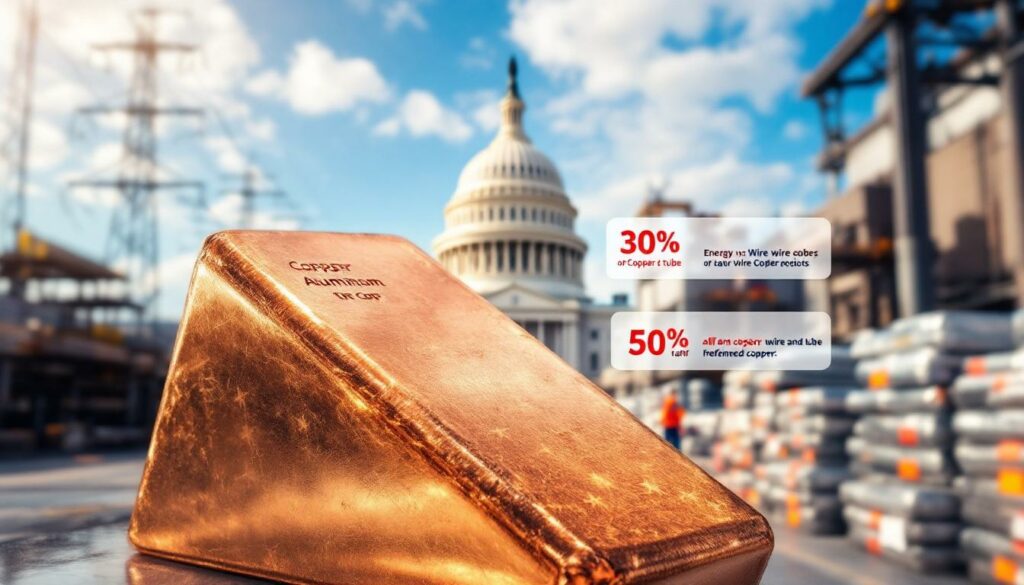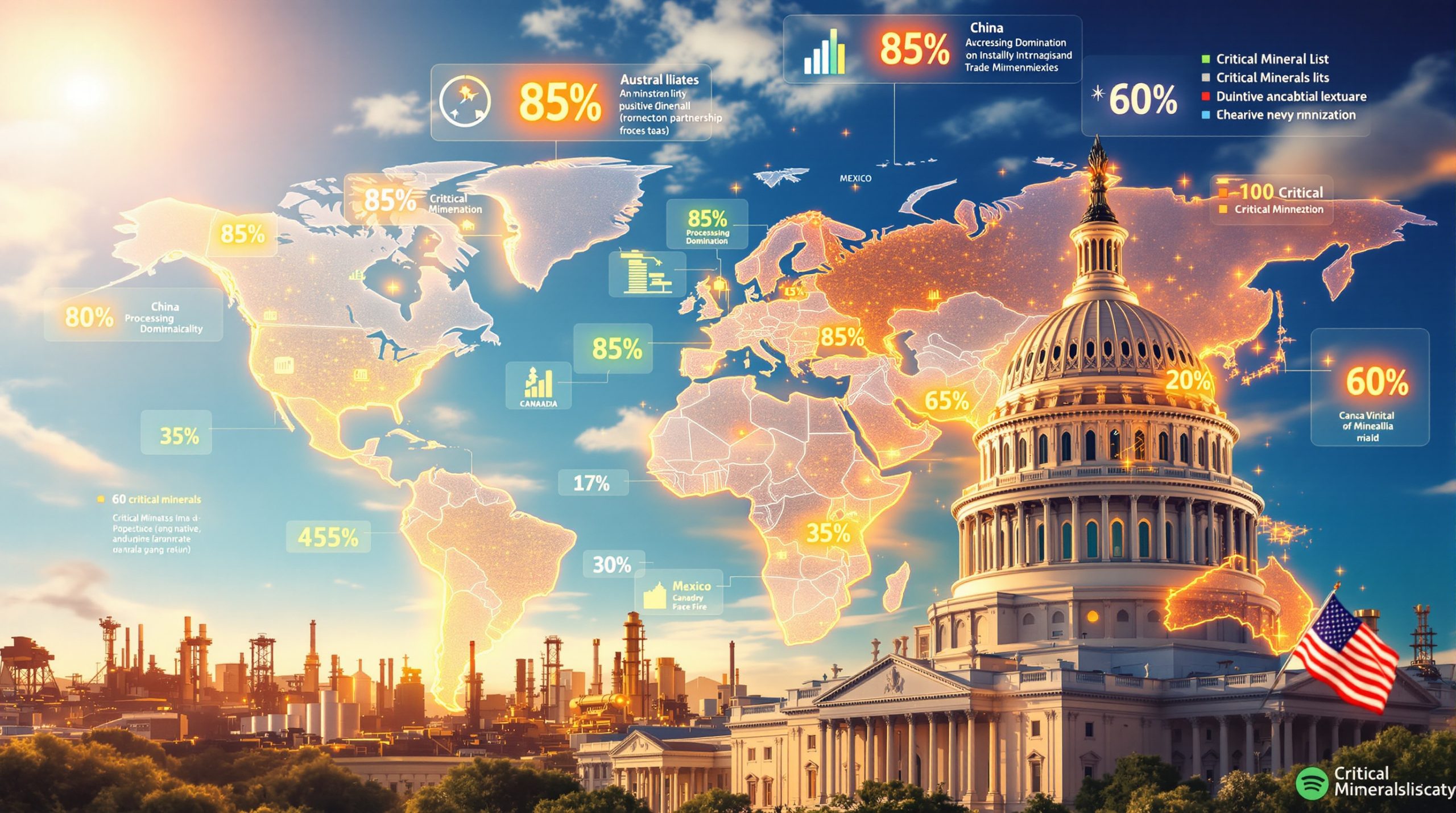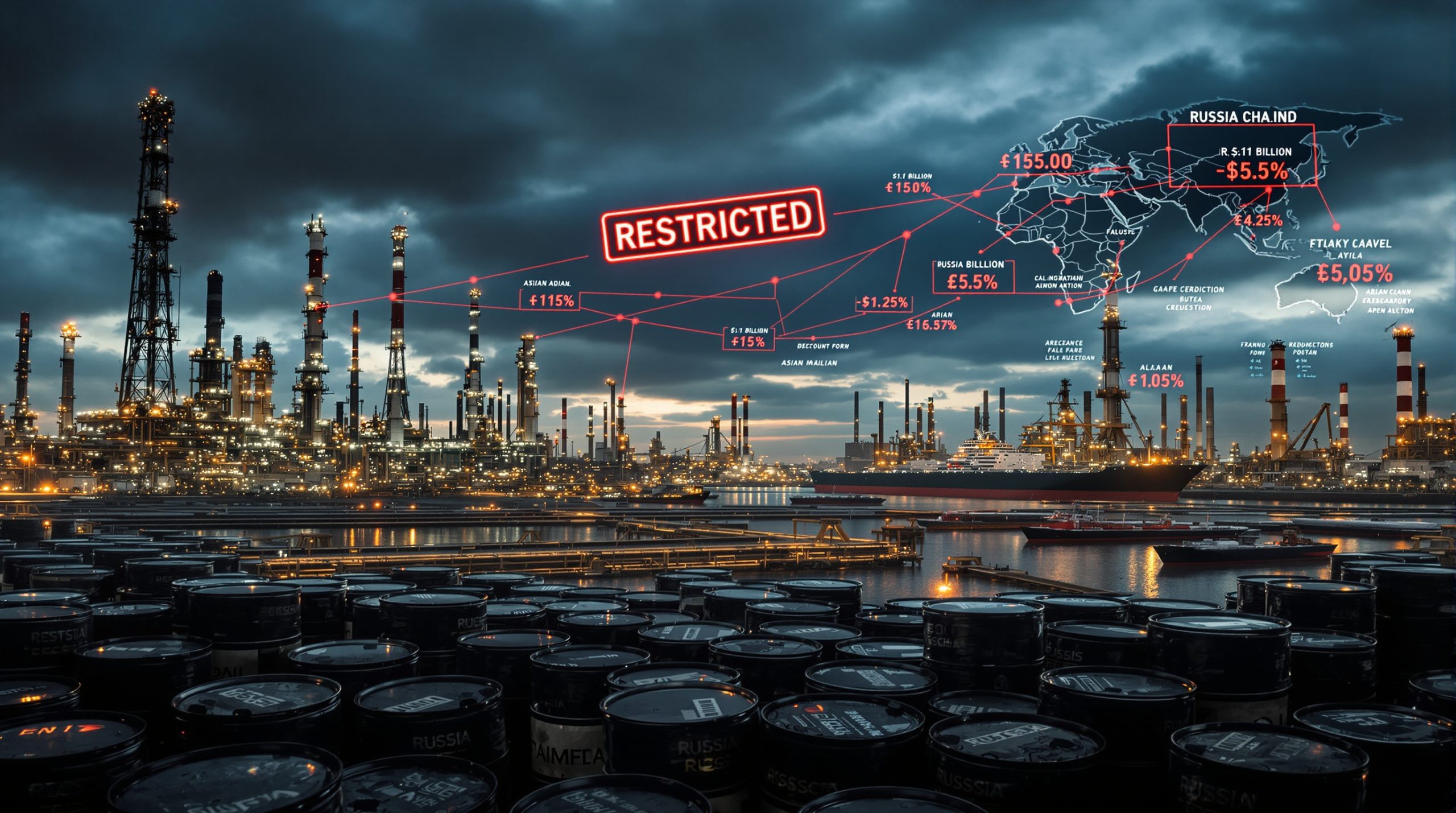Why Did Copper Escape US Tariffs When Aluminum Did Not?
The recent trade policy decisions from Washington have created a stark contrast in how two essential industrial metals are being treated. Refined copper has been granted an exemption from import duties, while aluminum faces steep 50% tariffs. This divergence reveals complex economic realities, energy considerations, and effective industry lobbying that shape US trade policy. Understanding these differences provides valuable insights into the strategic priorities driving these decisions.
The Surprising Copper Tariff Exemption Decision
What Happened to Copper Tariffs?
In a move that sent ripples through global metals markets, the United States recently exempted refined copper metal from import duties while only applying tariffs to semi-finished copper products like wire, tube, and sheet. This decision triggered a significant market reaction, with copper prices on Comex dropping more than 20% following the announcement, according to Reuters reporting from August 2025.
Meanwhile, aluminum has faced a dramatically different fate. Since June 2025, aluminum metal imports to the US have attracted steep 50% tariffs, creating a stark contrast in how these two essential industrial metals are being treated under current trade war strategies.
The exemption for refined copper signals a nuanced approach to trade policy that considers the complex supply chains and manufacturing dependencies that exist within the US economy. By targeting only semi-finished copper products, policymakers appear to be balancing protection for domestic manufacturing with the need for affordable raw materials.
Key Differences Between Copper and Aluminum Tariff Treatment
The contrasting tariff treatment highlights the different economic realities facing these two metal industries. While both metals are essential to manufacturing and infrastructure, their production economics and market dynamics differ significantly.
The exemption for refined copper suggests an acknowledgment of the metal's critical role in US manufacturing supply chains, particularly in electrical equipment, construction, and renewable energy technologies. In contrast, the steep aluminum tariffs appear designed to shield what remains of domestic aluminum smelting capacity from international competition.
This bifurcated approach demonstrates how US trade policy is increasingly tailored to specific industry conditions rather than applying blanket protectionist measures across all metals sectors. The decision-making process weighs factors including domestic production capacity, energy intensity, and strategic importance to the broader economy.
Why Are Electricity Costs Central to the Tariff Decision?
The Energy Cost Factor in Metal Production
Energy costs represent a fundamental driver behind the different tariff approaches. According to Macquarie estimates cited by Reuters, energy represents approximately 30% of copper production costs, while for aluminum, that figure jumps to around 50%. This difference in energy intensity creates vastly different economic equations for domestic production of these metals.
US aluminum smelters face substantially higher electricity bills than their global competitors, creating an uneven playing field that has contributed to the industry's decline over decades. The energy cost disadvantage places American producers at a structural disadvantage that tariffs economic implications aim to offset.
Copper production, while still energy-intensive, requires significantly less electricity per ton of metal produced. This fundamental difference in production economics has shaped how policymakers approach trade protection for each industry.
The Aluminum Energy Challenge
For aluminum producers, securing competitive long-term power purchase agreements represents a major hurdle to maintaining or expanding US production capacity. American smelters face power costs that exceed those of major producing countries including the United Arab Emirates, Bahrain, and China.
These elevated energy costs have been the primary driver behind the dramatic decline in US aluminum smelting capacity over the past three decades. As Marcus Garvey, a Macquarie analyst, bluntly stated in the Reuters report: "There is no economic case for building any greenfield aluminum smelting capacity without substantial intervention. Even then, intervention may not be sufficient."
The 50% aluminum tariffs represent an attempt to level this uneven playing field, though questions remain about whether even this level of protection can overcome the fundamental energy cost disadvantage facing US producers.
How Has US Aluminum Production Changed Over Time?
The Decline of US Aluminum Smelting
The stark decline in US aluminum production capacity tells a compelling story about the challenges facing domestic smelters. According to US Geological Survey data cited by Reuters, US primary aluminum production has fallen dramatically over three decades:
- 3.35 million metric tons in 1995
- 1.6 million tons in 2015
- Only 670,000 tons in 2024
This represents an 80% decline in domestic production capacity, leaving only four active US aluminum smelters today compared to 23 in 1995. This contraction has occurred despite previous attempts at trade protection, highlighting the severe structural challenges facing the industry.
The aluminum tariffs represent the latest effort to halt this decline, though industry experts remain skeptical about whether even 50% duties can overcome the fundamental economic challenges. The copper industry, while facing its own challenges, hasn't experienced nearly as dramatic a contraction in domestic capacity.
The Economic Reality for Aluminum Producers
The economics of aluminum production in the United States remain challenging even with substantial government intervention. The high electricity costs, coupled with global competition from producers with access to cheap power, create a structural disadvantage that's difficult to overcome through tariffs alone.
Even with the 50% tariffs now in place, many analysts question whether they will be sufficient to trigger new investment in US aluminum smelting capacity. The gap in production costs between US facilities and international competitors, particularly those with access to low-cost renewable or subsidized energy, may simply be too large to bridge.
For copper, the different tariff approach reflects a recognition that the industry faces different economic realities, with energy costs representing a smaller portion of overall production expenses.
How Did Industry Lobbying Influence the Tariff Decisions?
Copper Industry's Effective Advocacy
The copper industry's successful campaign for tariff exemption provides a case study in effective industry advocacy. Major copper producer Freeport-McMoRan made a compelling case in its submission to the US government, warning that global trade wars could undermine US copper production.
As reported by Reuters, the company argued that "a global trade war could result in slower economic growth. Slower growth in the US or globally would negatively impact copper prices, which could threaten the viability of the domestic copper industry due to its elevated cost structure."
This message effectively communicated how copper tariff effects could potentially harm rather than help domestic producers, while emphasizing the metal's importance to downstream US manufacturing. By focusing on the potential negative consequences of tariffs, copper producers presented a more nuanced view that ultimately shaped policy decisions.
Aluminum Industry's Tariff Support
In stark contrast, the aluminum industry vocally supported aggressive tariffs. Century Aluminum, a major US producer, publicly "applauded President Trump's unwavering defence of the nation's domestic production of critical metals by increasing aluminum tariffs to 50%," according to their June press release cited by Reuters.
The aluminum industry successfully framed the tariffs as essential protection for what remains of the US aluminum smelting industry. Their messaging emphasized national security concerns and the importance of maintaining domestic production capacity for critical metals, resonating with policymakers focused on industrial policy and supply chain security.
The different lobbying approaches highlight how industry stakeholders shape tariff policy impact through strategic messaging that aligns with broader political and economic priorities.
What Are the Market Implications of the Different Tariff Approaches?
Impact on Copper Markets
The exemption for refined copper acknowledges its strategic importance to US manufacturing and the complex global supply chains that have developed around the metal. By focusing tariffs only on semi-finished products, policymakers have created a tiered approach to protection that aims to support domestic fabricators without driving up raw material costs.
The market reaction was significant, with copper prices dropping 20% after the announcement, according to Reuters reporting. This price movement reflects investors' reassessment of supply-demand dynamics in light of the policy decision, particularly the expectation that US markets will remain open to global copper flows.
For copper consumers in manufacturing, construction, and renewable energy sectors, the exemption helps maintain access to global supply chains without the additional costs that tariffs would impose.
Shifting Aluminum Trade Flows
The 50% aluminum tariffs are already causing shifts in global trade patterns as suppliers adjust to the new reality. Aluminum imports to the US are likely being redirected through countries with preferential trade agreements, while US manufacturers that rely on aluminum inputs face potentially higher costs.
The high tariffs create opportunities for domestic producers to capture market share, but also pose challenges for downstream manufacturers who must compete globally while absorbing higher input costs. This tension between upstream and downstream interests is a common challenge in trade policy that affects overall industrial competitiveness.
The aluminum tariff approach represents a more aggressive stance on protecting domestic production, with potentially significant implications for supply chains and pricing throughout the aluminum value chain.
How Do These Decisions Reflect Broader US Trade Policy?
Strategic Minerals Approach
The different treatment of copper and aluminum highlights a nuanced approach to critical minerals policy that balances multiple objectives. Rather than applying uniform protection across all metals sectors, policymakers have tailored their approach based on industry-specific economics, supply chain considerations, and strategic priorities.
Energy cost differentials play a central role in determining which industries receive protection, with aluminum's greater electricity intensity making it more vulnerable to international competition from regions with lower power costs.
This differentiated approach demonstrates how industry-specific economics influence trade policy outcomes, with protection focusing on sectors facing the most severe competitive disadvantages.
National Security Considerations
Both copper and aluminum are considered important for national security and industrial capability, but the severity of the decline in domestic aluminum production has triggered a more aggressive protective response. The 80% reduction in US aluminum smelting capacity over three decades represents a more dramatic erosion of domestic capability than has occurred in copper.
The policies attempt to address long-term structural challenges in US metals production while balancing the needs of downstream manufacturers who rely on affordable inputs. This balancing act reflects the complex considerations that shape modern trade policy, particularly for materials deemed critical to economic and national security.
FAQ: Understanding Metal Tariffs and Their Implications
Why is aluminum production more energy-intensive than copper?
Aluminum production requires an electrolysis process that separates aluminum from oxygen in alumina (aluminum oxide). This process, known as the Hall-Héroult process, consumes massive amounts of electricity—typically between 13,000 and 17,000 kilowatt-hours per ton of aluminum produced.
Copper refining, while still energy-intensive, typically requires only about 1,000-3,000 kilowatt-hours per ton, depending on the specific process used. This fundamental difference in energy requirements—approximately 5-15 times more electricity for aluminum—creates very different cost structures and sensitivities to energy pricing.
How do these tariffs affect downstream manufacturers?
Manufacturers using aluminum as an input face potentially higher costs due to the 50% tariffs, which could make their products less competitive internationally. Industries particularly affected include automotive, aerospace, packaging, and construction, where aluminum's lightweight properties make it essential.
Copper-using industries benefit from the exemption on refined copper, allowing them to maintain more stable input costs. This helps preserve competitiveness for sectors including electrical equipment, electronics, construction, and renewable energy technologies, where copper's electrical conductivity makes it irreplaceable.
Could these tariffs lead to new US smelting capacity?
For aluminum, industry analysts remain skeptical about new greenfield capacity despite the 50% tariffs. As Macquarie analyst Marcus Garvey noted in the Reuters report, there is "no economic case for building any greenfield aluminum smelting capacity without substantial intervention. Even then, intervention may not be sufficient."
The structural disadvantage in energy costs remains the primary obstacle to new investment. For copper, the partial tariff approach is unlikely to drive significant new smelting investment, though it may support existing operations and potentially encourage investment in semi-finished product manufacturing.
How might global suppliers respond to these tariff decisions?
Global copper suppliers will likely continue directing refined copper to the US market while potentially redirecting semi-finished products to other markets or considering investments in US-based finishing operations to avoid the tariffs on processed products.
Aluminum producers may explore operations in countries with US tariff ramifications, invest in value-added processing to navigate tariff structures, or focus on markets outside the US. Some suppliers might also absorb portions of the tariff costs to maintain market share, though the 50% rate makes this challenging over the long term.
Further Exploration
Understanding the contrasting treatment of copper and aluminum tariffs provides valuable insights into how economic realities, energy considerations, and effective industry advocacy shape trade policy. The different approaches to these two essential industrial metals highlight the complex balancing act policymakers face when attempting to support domestic industries while maintaining competitive supply chains.
As global trade patterns continue to evolve in response to these policies, both producers and consumers of these metals will need to adapt their strategies accordingly. The coming months will reveal whether these tariff decisions achieve their intended goals of supporting domestic production while maintaining manufacturing competitiveness.
Disclaimer: This article contains analysis of industrial policy and market dynamics based on currently available information. Future policy changes, market conditions, or economic developments may significantly alter the landscape for these metals. Readers should consult with qualified financial and industry advisors before making investment or business decisions based on tariff policies.
Ready to Capitalise on the Next Major Mineral Discovery?
Discover why major mineral discoveries can lead to significant market returns by exploring Discovery Alert's dedicated discoveries page, where our proprietary Discovery IQ model provides real-time alerts on ASX announcements, turning complex mineral data into actionable investment opportunities.




